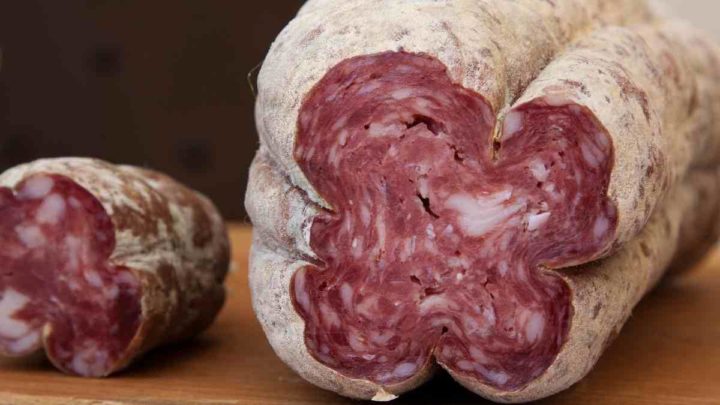Salumi vs Salami

Salumi vs Salami we explain the differences.
Most people who don’t have a job in an Italian style deli would not be able to tell the difference between ham style Italian products
You may also be interested in
- Best Substitute for Jalapeno
- Best Alternative for Mustard Powder
- What Can I Use Instead of Skirt Steak
- What Is the Best Substitute for Dill Seed
We have all heard the exotic-sounding names like
- Spalla
- Pancetta
- Lardo
If you can’t remember everything, you’re not alone.
“Salumi” and “salami” are two words that are often used to mean the same thing, but even that one simple spelling change makes a huge difference. Even if both are types of Italian meats, such two words are not the same. They don’t mean the same thing.
Before we go into more detail about each, know this: We’ll go over each one in more detail below. Salumi is a type of ham that is traditionally cured in Italy. Salami is a salt-cured or even cooked sausage that can often be called salumi.
Salumi is a type of meat that is made from pork.
In Italy, salumi is a word that refers to the curing process and then preparing meats that have been preserved with salt and spices.

The word salumi is also employed as an overarching term to describe these meats.
Salumi is a word that describes meat that changes depending on who and where it is made. Because it’s a skill, the sausage make contributes in a big way to the overall flavor to the salami sausage. The products can be different. Traditionalists call only meats that have been cured salumi. Others call cooked meats that are served warm or cold salumi, even though they aren’t always pork. A purist would disagree though.
Salami is a type of meat that is made from pork.
Put another way, salami is a type of salumi.
In general, salami is an Italian sausage that has been salt-cured, left to dry, fermented, or cooked. Salami comes in a wide range of flavors.
In general, salami is an Italian sausage that has been salt-cured, left to dry, fermented, or cooked.
Salami comes in a wide range of flavors. The meat base, which can be pork, beef, or wild boar, is ground and mixed with spices, extra fat, and wine. Then, the meat is stuffed into a sausage type casing.
Once the tubes of meat are put together, they are hung out to dry well and then ferment a little. The salt used in the process of “fermenting” the meat draws moisture out of the meat and stops “spoilage bacteria” from growing.
This allows good culture varieties to thrive and gives salami its unique flavor.
Pepperoni is probably the most popular type, as well as recognized types of dry-aged, hard salami.
Salami can also be cooked. Mortadella is a type of salami that has been cooked and is flecked with black crushed pepper.
Now that you understand the distinction between these 2 well meaning gourmet Italian words, you can choose how you want to eat your favorite salumi of choice. If you want to make a charcuterie board, think about adding some traditional items, like prosciutto, along with your Brie, crackers, and jam.
Do you need to cook salamis?
The answer depends on the type of salami you buy. Some types of salami are made to be cooked while others are meant to be eaten raw.
Salamis are usually made from pork loin (the shoulder) or belly. Pork belly is often used for making dry cured sausages such as pancetta and guanciale.
Some types of salami include:
– pepperoni – made from pork loin
– mortadella – made from pork fatback
– bresaola – made from salt beef often brisket
– speck – made from pork leg meat
– sughero – made from pork shoulder
How Do You Eat Salumi
There are many ways to enjoy salumi. Here are just a few ideas:
– add it to sandwiches
– serve it with cheese
– use it as a topping for pizza
– slice it thinly and serve it over pasta
